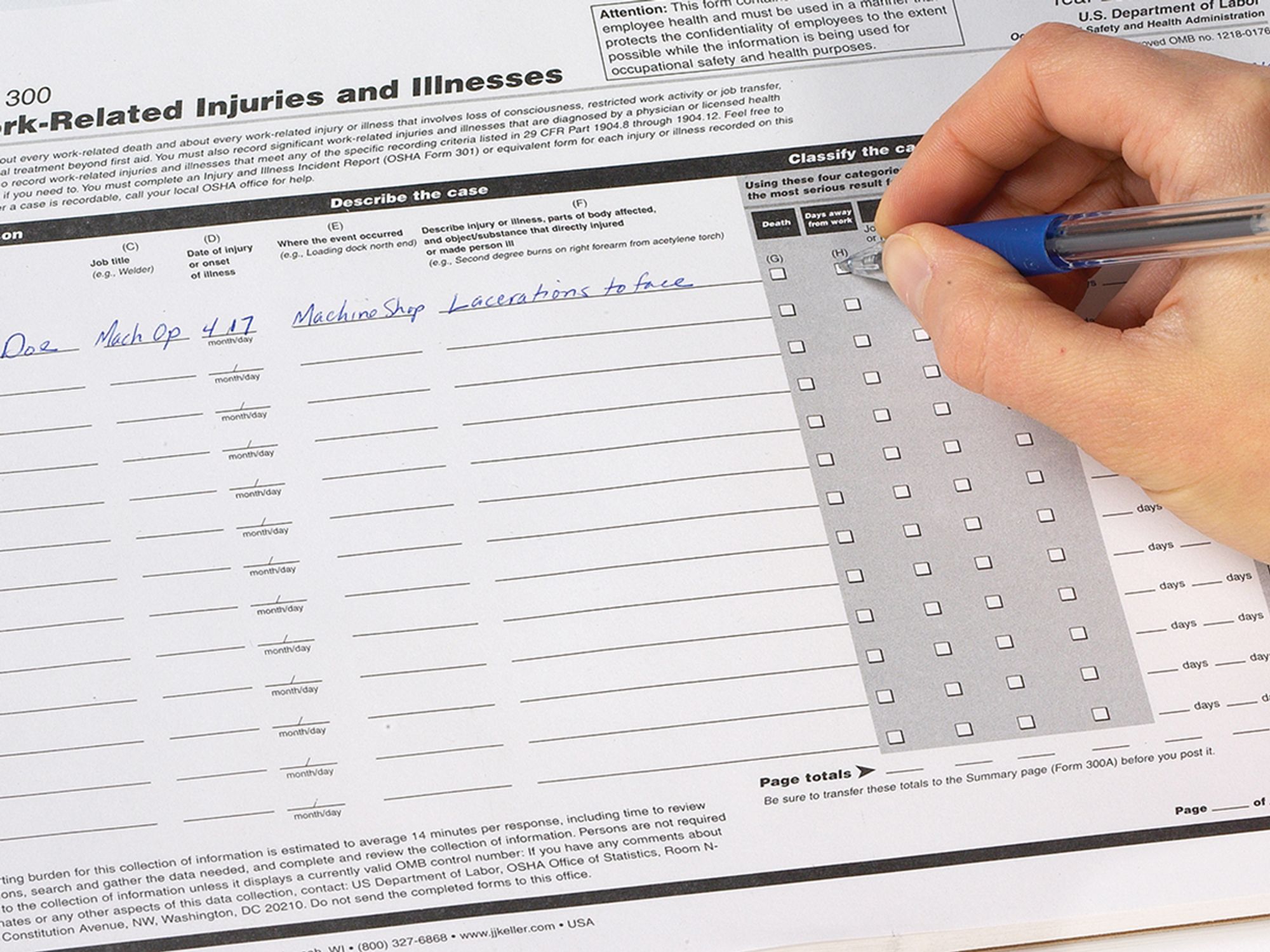Other related regulations

- Section 1910.1030 is not the only regulation related to blood and other potentially infectious materials (OPIM). Other regulations also relate to bloodborne pathogens.
Part 1904, the Recordkeeping and Reporting Occupational Injuries and Illnesses Standard, requires employers not in partially exempted industries (see Appendix A to Subpart B to Part 1904) to record work-related punctures, cuts, lacerations, and scratches from sharp objects that are contaminated with another person’s blood or OPIM.
Covered employers will record these types of incidents as an “injury” on the OSHA 300 Log (Log of Work-Related Injuries and Illnesses). If the employee develops a bloodborne disease, the entry must be updated and recorded as an “illness.”
However, if an employee is splashed or exposed to blood or OPIM without being cut, scratched, or punctured, the incident must be recorded on the OSHA 300 Log only if it results in the diagnosis of a bloodborne illness or it meets one or more of the recording criteria of 1904.7.
To protect privacy, the employee’s name may not be entered on the OSHA 300. Subparagraphs 1904.29(b)(6) through (b)(10) discuss privacy concerns. Employers must keep a separate, confidential list of case numbers and employee names in these privacy cases so they can update the cases and provide them if asked by the government.
The Hazardous Waste Operations and Emergency Response (HAZWOPER) Standard, 1910.120, covers three groups of employees:
- Workers at hazardous waste cleanup operations;
- Workers at operations involving hazardous waste treatment, storage, and/or disposal;
- Workers expected to respond to emergencies caused by the uncontrolled release of a hazardous substance.
The definition of hazardous substance includes any biological agent or infectious material that may cause disease or death. There are potential scenarios where the bloodborne and HAZWOPER standards may interface, such as:
- Workers involved in cleanup operations at hazardous waste sites involving infectious waste;
- Workers at incinerators that burn infectious waste and are permitted under a Resource Conservation and Recovery Act (RCRA) authority; and
- Workers responding to an emergency caused by the uncontrolled release of infectious materials, such as a transportation accident.
Employers of employees engaged in these types of activities must comply with the requirements in 1910.120, as well as the Bloodborne Pathogens Standard at 1910.1030. If there is a conflict or overlap, the provision that is more protective of employee safety and health applies.
According to 1910.145, the Specifications for Accident Prevention Signs and Tags Standard, biohazard signs and tags are required:
- To signify the actual or potential presence of a biohazard, which is an agent infectious to humans; or
- To identify equipment, containers, rooms, materials, experimental animals, or combinations of any of these, that contain, or are contaminated with, a viable biohazard.
Records concerning employee exposure to bloodborne pathogens and records about human immunodeficiency virus (HIV) and/or hepatitis B (HBV) status are both considered employee medical records within the meaning of 1910.1020, the Access to Employee Exposure and Medical Records Standard.
This regulation simply states that the requirements for biohazard signage applicable to shipyard employment are identical to the requirements set forth in 1910.145. Therefore, biohazard signs and tags are required:
- To signify the actual or potential presence of a biohazard, which is an agent infectious to humans; or
- To identify equipment, containers, rooms, materials, experimental animals, or combinations of any of these, that contain, or are contaminated with, a viable biohazard.
29 CFR 1926.21, .25, .28, and .200
Although 1910.1030 does not apply to the construction industry, employees in construction are not free from bloodborne pathogen hazards. Therefore, employees responsible for providing first aid or medical assistance at a construction site are expected to receive basic instruction in bloodborne pathogen hazards, as well as vaccination and follow-up in the event of an exposure incident. Appropriate personal protective equipment and sharps containers must be provided.
OSHA sections 1926.21, 1926.25, 1926.28, and 1926.200, plus Section 5(a)(1) of the Occupational Safety and Health (OSH) Act, offer some protection for employees in this industry.
